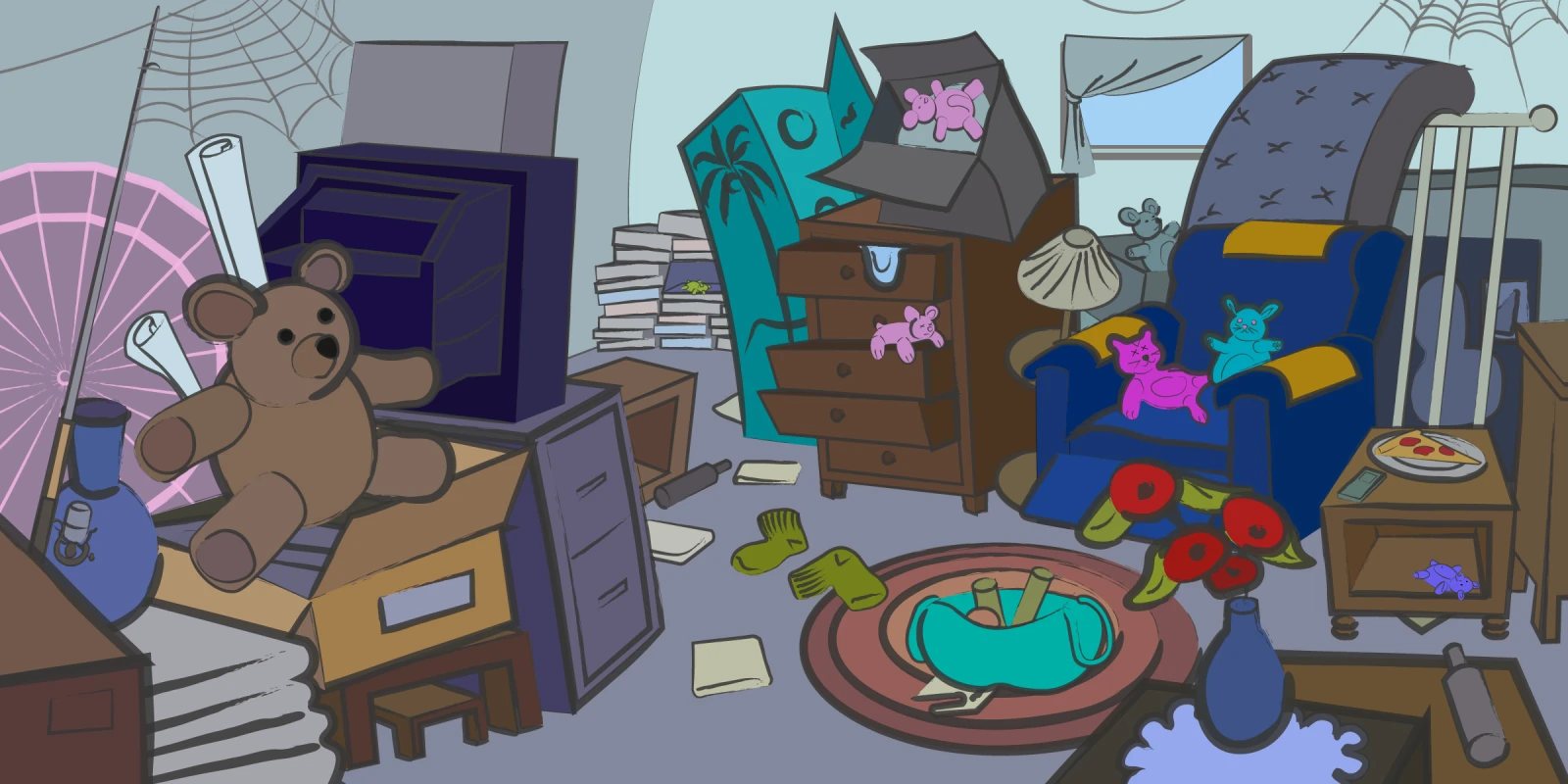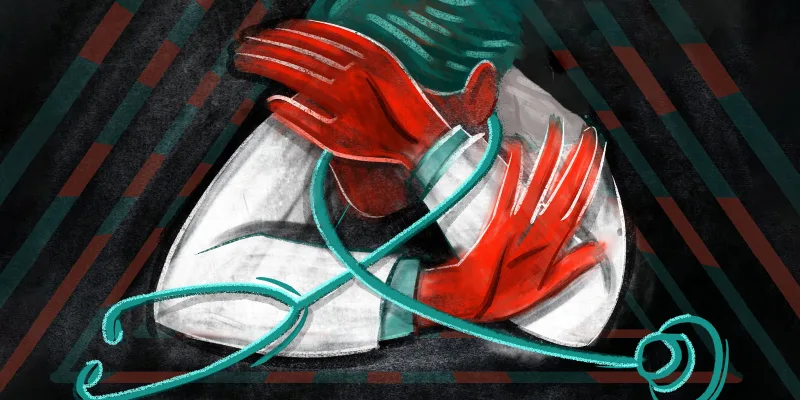What a difference I saw in the woman sitting across from me, here today for a follow-up visit.
“Well, how are you doing?” I asked with a smile.
“I feel so much better! Things are still hard but I’m finally facing them. I don’t know why I finally told you about it after so many years of pretending that I was OK, but I’m so glad I did.”
I remembered back to our previous appointment. She had seemed genuine in her desire to eat healthier but she wasn’t sure how to do that. She had looked anxious and tired. I always ask about access to a kitchen and cooking knowledge — you can’t tell by looking at someone whether they have a working stove and fridge, and whether they know how to use them. Her eye contact had dropped when I asked; that’s always a sign that it’s time for a heavy dose of acceptance, openness, and curiosity. Our visit had turned in a whole new direction at that point, from physical health to mental health.
Today, we were checking in on how she was doing with her new treatment and therapist.
“Me too!” I agreed. “There’s so much stigma, it’s brave of you to talk about how hard things have been for you.”
“You see these people in movies and on TV and they just seem so messed up and you’re like, that’s not me, so I must be OK. I have a great kid with good grades, I go to work every day. I can’t have the same problem as them.” She stopped and thought for a moment. “If they would just write characters like me, not totally messed up, really trying hard, maybe more people would get help. I have a friend that I think is hiding the same problem. I think there are a lot of us.”
I nodded in agreement before asking, “What do you think is helping the most right now?”
Her face broke into a smile. “Knowing that I’m not some crazy messed up person who just can’t get it together. Knowing that it’s actually just specific things happening in my brain that someone has actually studied. I never really got help as a kid so I’m at higher risk for problems later — that’s not my fault. But of course, I thought everything was my fault. And then when I just couldn’t cope anymore, I was so ashamed.”
She sat quietly and I forced myself to count to 10 in my head. (I tend to interrupt in these moments, so I’ve learned to always count before speaking.) As usual, my wait paid off.
“My daughter really wanted to have her friends over,” the patient went on, “but it was just too much to clean the whole house, so I did what you said and took a photo with my phone to focus on what was visible. I couldn’t have done it without the meds and talking with the therapist. But I didn’t panic and shut down. And she helped me realize that I didn’t have to do everything or do it right, I just had to get enough space good enough.”
I counted again.
She continued, “It took the whole week, 15 minutes at a time. I’d set a timer and focus on making one spot look OK. It wasn't perfect, but it was good enough. I only got the entry and living room and the little bathroom off the hall done, and we just kept the rest of the doors closed. But my daughter and her friends watched a movie and had pizza and I felt like the best mom in the world.”
At this point, I was beaming. “That’s amazing!” I encouraged her. “I know how hard it was for you to get going and keep at it. Breaking it down into manageable steps was brilliant.”
“Well, that was really Jenny,” she admitted. “She’s great. I’ve never had a therapist I thought I could totally trust with everything that’s happened. Do you think my husband could see her, too? He had another really awful experience, same thing as his last therapist.”
“Oh no!” I said, “I’m so sorry! What happened?”
“Well,” her whole demeanor changed in an instant. Her eyes dropped and she switched from animated to slumped shoulders. “When he mentioned how hard it’s been for him because of my struggles, the therapist … well, without even asking any questions, she immediately asked if she should call social services!”
I handed over a box of tissues. “That’s crazy, I can’t believe she’d say that.” I waited a moment but it seemed I’d lost my patient to an avalanche of shame and sadness. “I want you to take just a moment and imagine that you had a different problem,” I said. “What if he’d said that you were so depressed that you weren’t getting out of bed? Would the first thing out of her mouth have been to ask about social services?”
She looked up at me with watery eyes. “No, of course not!” I watched as a look of surprise crossed her face. “Wait a second, that’s two of my husband’s therapists and one of mine who have said the same thing. Not always immediately like that. But none of those three bothered to find out more details. That’s not OK! Why is it that as soon as someone realizes they can label me as a hoarder, they immediately think I’m a completely different person from who I am? Like, anything else and I’d be worth helping, but with hoarding I’m not even human anymore. Why do they do that?”
She seemed to be genuinely asking me, so I thought for a moment before replying. “Well, probably because they are human, too, and they don’t know what to do to help you so they don’t respond in the way they would about something they understood better. There’s also a lot of something called implicit bias — they don’t even realize their gut reaction is different so they can’t check it.”
“But isn’t it just another mental health diagnosis?” she asked.
“Yes,” I agreed, “and at the same time, it’s more like how doctors diagnosed medical problems hundreds of years ago. Back then, they couldn’t actually diagnose the cause of a symptom. Instead of diagnosing someone with heart failure, they’d diagnose them with swelling. And if you don’t understand the cause, you can’t treat the symptom correctly — so they’d do all kinds of crazy stuff, bloodletting and so forth.” I held the patient’s gaze. “It’s kind of the same way with hoarding. Most people, even clinicians, only understand it from what they can observe on the outside. They don’t understand the causes. So, they try to treat the symptom instead of the actual problem. They’re just as confused as doctors practicing bloodletting hundreds of years ago.”
The patient laughed. “Thanks for not suggesting bloodletting.”
When I talk about my family medicine practice, people are always surprised by how many of my patients struggle with hoarding. Isn’t it a rare psychiatric condition? In truth, we don’t have good statistics on hoarding because often only the most extreme cases are diagnosed. It’s such a stigmatizing label that no one wants it attached to them if they can possibly avoid it. Instead of seeking professional help, many with more moderate problems opt to muddle along or seek only the help of friends and family.
In reality, there’s a spectrum of issues, and most of us have some odd quirks around our belongings. From my stash of more yarn than I can actually knit this year to my friend’s rock collection, we all have things we don’t need but are able to excuse keeping. It only becomes an issue when a combination of executive functioning difficulties, mental health struggles, life stressors, or past trauma combine to make it hard to manage. It’s a problem when it’s a problem … but it tends to be a gradual slide from not being able to use one corner of the counter to not being able to use larger spaces or more important parts of the house. Money can also be a factor — if you’re wealthy enough to have a large house and a professional organizer, no one cares if you also have 500 pairs of shoes you’ll never wear. Until we destigmatize “hoarding,” no one will be willing to get help until the problem is completely out of control.
Much like the joke that you’re an alcoholic if you drink more than your doctor, we tend to treat problems as “problems” only if the behavior is worse than our own. But from the exam room, there’s no way to accurately assess the patient’s struggle unless we ask and they trust us enough to answer honestly. And once they do, we need to look past the symptom (i.e., “too much stuff”) to the underlying mental health and executive functioning difficulties. If we don’t address the cause, the symptom will just keep coming back, no matter how many times we try bloodletting.
Helping my patient was like peeling the layers of an onion, gradually working deeper toward the core of her struggle with hoarding. We dug into her grief, depression, and low motivation. We explored her difficulties with categorizing, focusing, and decision making, all common challenges for individuals with ADHD. We explored the need for setting boundaries between herself and her spouse, parents, and siblings. All of this required a combination of education from me about the neuropsychology of her diagnoses, help from a compassionate and skilled therapist, and medication.
Each time I saw my patient for a medication check or refill, we’d go deeper. Dealing with everything took time, but doing so didn’t just improve her hoarding — indeed, hoarding was only the most visible sign of a problem that had impacted every aspect of her life. As her other symptoms improved and she learned new skills, the stress around her physical belongings normalized. At first, each time she’d fall behind on laundry or let a stack of her daughter’s school papers languish on the counter, she’d panic. But I reassured her that these were normal problems, signs that she is human like everyone else. Eventually, her decisions around her belongings became instinctive; she started letting things go when they no longer had a place in her life and actually enjoying what she owned because she was no longer overwhelmed by it. More importantly, with her invisible suffering alleviated, we moved the focus from her stuff to her daughter’s sleepovers and her family potlucks. Now, she could finally be the mom she had always wanted to be.
Do you see diagnoses masquerading as personality quirks in the exam room? Share how you draw the line between “problem” and problem in the comments section.
Robin Dickinson, MD is a board-certified family physician who teaches clinical skills to first-year students at Rocky Vista University. She created the first pre-medical curriculum for kids, hosts a podcast for young people who want to be physicians, consults neurodiverse families and individuals, and founded the only free clinic and the first DPC practice in her hometown. You can find her at robindickinsonmd. Dr. Dickinson is a 2021–2022 Doximity Op-Med Fellow.
Illustration by Jennifer Bogartz







